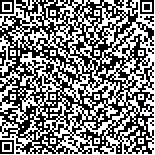罗思嘉,龚剑秋,朱童,等.悬吊模式下的核心稳定性训练对脑卒中患者平衡功能的影响[J].中华物理医学与康复杂志,2023,45(6):517-521
扫码阅读全文

|
| 悬吊模式下的核心稳定性训练对脑卒中患者平衡功能的影响 |
|
| |
| DOI:10.3760/cma.j.issn.0254-1424.2023.06.007 |
| 中文关键词: 脑卒中 悬吊训练 核心稳定性训练 平衡功能 表面肌电 |
| 英文关键词: Stroke Sling exercise therapy Core stability training Balance Surface electromyography |
| 基金项目:浙江省科技厅公益技术项目(LGF20H250002);绍兴市级医卫类科技计划(2020A13006,2020A13030) |
|
| 摘要点击次数: 4103 |
| 全文下载次数: 4564 |
| 中文摘要: |
| 目的 观察悬吊训练模式下的核心稳定性训练对脑卒中患者平衡功能的影响。 方法 选取符合标准的60例脑卒中患者按随机数字表法分成对照组和实验组,每组30例。2组患者均接受脑卒中后常规的康复训练;在此基础上,对照组进行传统核心稳定性训练,实验组则进行悬吊训练模式下核心稳定性训练,每日训练1次,每周5次,连续训练4周。分别于治疗前和治疗4周后(治疗后),采用Prokin平衡仪对2组患者的站立位平衡能力进行评定,并记录患者睁眼、闭眼平衡测试时的运动轨迹长度及运动椭圆面积;同时利用表面肌电图(sEMG)记录平衡测试时双侧竖脊肌和多裂肌肌电信号的平均肌电(AEMG)值。 结果 ①平衡功能变化:治疗后,睁眼闭眼平衡测试,2组患者压力中心的运动轨迹长度、运动椭圆面积均少于组内治疗前(P<0.01);实验组患者压力中心的运动轨迹长度[睁眼(226.40±88.59)mm、闭眼(312.07±118.45)mm]、运动椭圆面积[睁眼(198.83±84.99)mm2、闭眼(303.50±123.86)mm2]均少于对照组[运动轨迹长度:睁眼(291.23±117.71)mm、闭眼(405.27±181.05)mm;运动椭圆面积:睁眼(250.47±109.23)mm2、闭眼(379.03±144.91)mm2],组间差异有统计学意义(P<0.05)。②表面肌电图变化:治疗后,睁眼和闭眼平衡测试时,2组患者双侧竖脊肌与多裂肌的AEMG值均大于组内治疗前(P<0.01);闭眼平衡测试时,实验组患侧多裂肌的AEMG值[(58.48±10.40)μV]显著大于对照组[(52.39±10.63)μV],且组间差异有统计学意义(P<0.05)。 结论 悬吊训练模式下的核心稳定性训练能显著改善脑卒中患者的平衡功能,其效果优于传统核心稳定性训练。 |
| 英文摘要: |
| Objective To observe the impact of core stability training in the sling exercise therapy pattern on the balance of stroke survivors. Methods Sixty stroke survivors were randomly divided into a control group (n=30) and an experimental group (n=30). In addition to routine rehabilitation training, the control group received traditional core stability training, while the experimental group underwent core stability training applying the sling exercise therapy pattern. Before and after 4 weeks of training, the standing balance of both groups was evaluated using the Prokin balance trainer, with the length and area of motion recorded when performing the balance test with the eyes open and closed. Surface electromyography was used to record the average EMG (AEMG) values of the bilateral erector spinae and multifidus muscles during the balance testing. Results After the 4 weeks of training the length and the area of progression of the center of the pressure were both significantly smaller for both groups than before the training with the eyes both open and closed. The average length and area in the experimental group were significantly less than among the controls. The AEMG values recorded during the balance tests were significantly higher than those before the intervention for both groups, with the multifidus muscle averages on the affected side significantly greater in the experimental group than among the controls when performing the balance test with the eyes closed. Conclusion Core stability training in the sling exercise therapy pattern is superior to conventional core stability training because it can better improve the balance of stroke survivors. |
|
查看全文
查看/发表评论 下载PDF阅读器 |
| 关闭 |